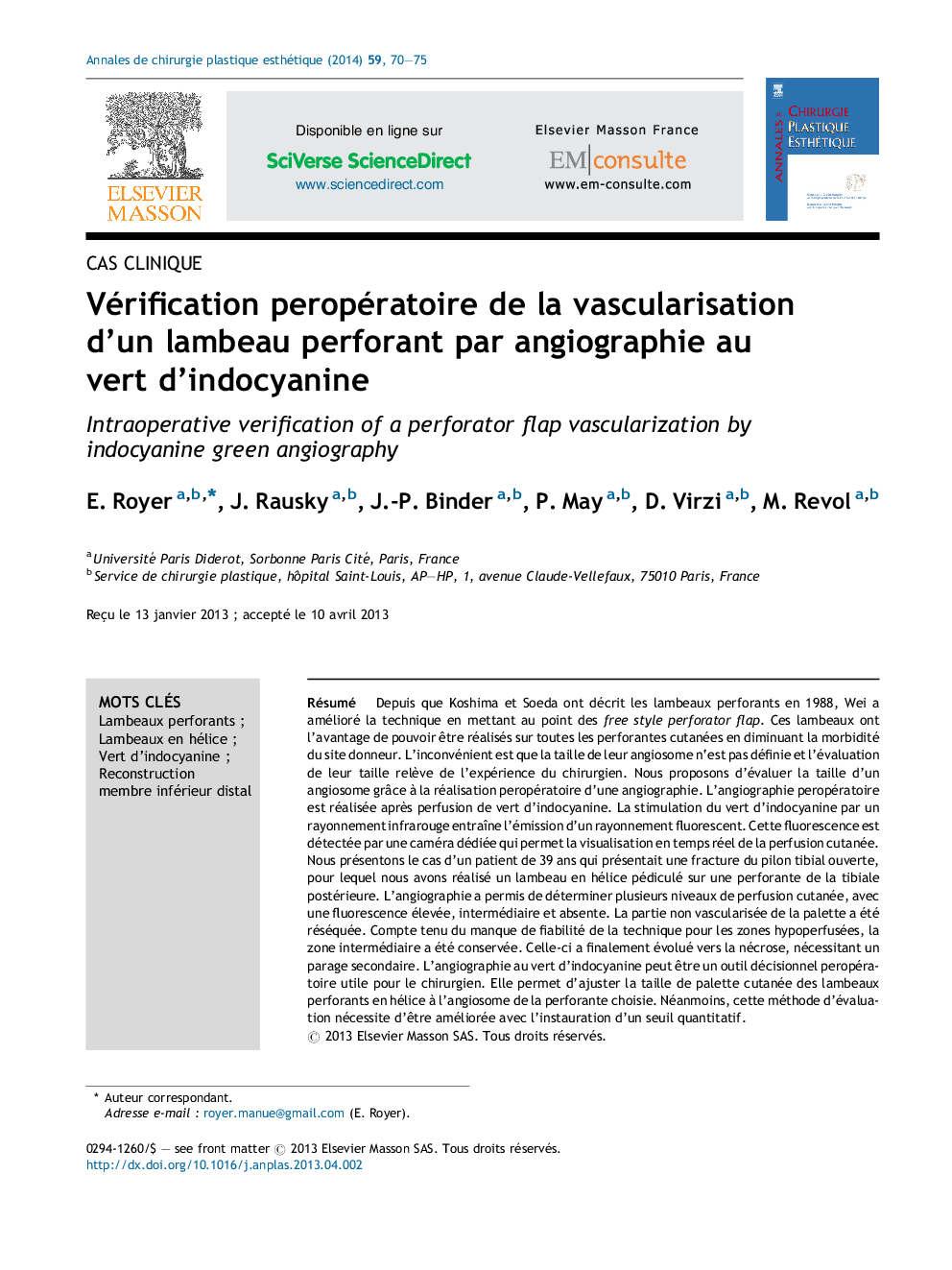| Article ID | Journal | Published Year | Pages | File Type |
|---|---|---|---|---|
| 3184661 | Annales de Chirurgie Plastique Esthétique | 2014 | 6 Pages |
RésuméDepuis que Koshima et Soeda ont décrit les lambeaux perforants en 1988, Wei a amélioré la technique en mettant au point des free style perforator flap. Ces lambeaux ont l’avantage de pouvoir être réalisés sur toutes les perforantes cutanées en diminuant la morbidité du site donneur. L’inconvénient est que la taille de leur angiosome n‘est pas définie et l’évaluation de leur taille relève de l’expérience du chirurgien. Nous proposons d’évaluer la taille d’un angiosome grâce à la réalisation peropératoire d’une angiographie. L’angiographie peropératoire est réalisée après perfusion de vert d’indocyanine. La stimulation du vert d’indocyanine par un rayonnement infrarouge entraîne l’émission d’un rayonnement fluorescent. Cette fluorescence est détectée par une caméra dédiée qui permet la visualisation en temps réel de la perfusion cutanée. Nous présentons le cas d’un patient de 39 ans qui présentait une fracture du pilon tibial ouverte, pour lequel nous avons réalisé un lambeau en hélice pédiculé sur une perforante de la tibiale postérieure. L’angiographie a permis de déterminer plusieurs niveaux de perfusion cutanée, avec une fluorescence élevée, intermédiaire et absente. La partie non vascularisée de la palette a été réséquée. Compte tenu du manque de fiabilité de la technique pour les zones hypoperfusées, la zone intermédiaire a été conservée. Celle-ci a finalement évolué vers la nécrose, nécessitant un parage secondaire. L’angiographie au vert d’indocyanine peut être un outil décisionnel peropératoire utile pour le chirurgien. Elle permet d’ajuster la taille de palette cutanée des lambeaux perforants en hélice à l’angiosome de la perforante choisie. Néanmoins, cette méthode d’évaluation nécessite d’être améliorée avec l’instauration d’un seuil quantitatif.
SummaryAfter Koshima and Soeda first described perforator flaps in 1988, Wei has improved the technique by describing the “free style perforator flap”. These flaps have the advantage of being performed on all skin perforators and in reducing donor site morbidity. The disadvantage, however is that the size of their angiosome is not defined and the evaluation of their relay on the experience of the surgeon. An evaluation of the size of an angiosome by conducting intraoperative angiography is proposed. Intraoperative angiography is performed after injection of indocyanine green. Stimulation of the indocyanine green by infrared causes the emission of fluorescent radiation. This fluorescence is then detected by a specific camera that displays real-time visualization of the skin's perfusion. We present the case of a 39-year-old patient who had an open tibial pilon fracture, for which we performed a pedicled propeller flap based on a posterior tibial perforator. Angiography was used to determine accurately the optimal skin perfusion of the propeller flap, which was based on a perforator from the posterior tibial artery. Angiography identified several levels of skin perfusion with a high fluorescence, intermediate and absent. The non-vascularized part of the skin paddle was resected. Given the unreliability of this technique, hypoperfused area was retained. Debridment of this area, however was necessary at day 5 postoperative with repositionning of the flap. Indocyanine green angiography may be a useful decision-making tool for intraoperative surgeon. It allows to adjust the size of the propeller flap's skin paddle to it angiosome. However, this evaluation method needs to be improved with the introduction of a quantitative threshold.
